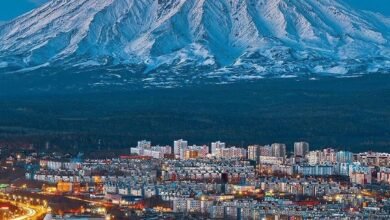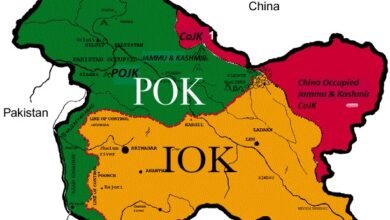Three more million-strong airports appeared in Russia
Million-strong airports in Russia have arrived: now there are 31 of them. There were 29. The bar here is more than 1 million passengers a year. Saratov, Orenburg and Grozny are among the “newcomers” who managed to overcome it by the end of 2023.

But one of the “old-timers” – Arkhangelsk airport – has dropped off the list. For several months it was closed for reconstruction of the runway, which was 90% worn out. But now the new runway will allow the airport to smoothly receive medium-haul airplanes.
Now the top 10 largest airports in Russia look like this. The leader is Sheremetyevo, where passenger traffic amounted to 36.6 million people. Then come Pulkovo (St. Petersburg) – 20.4, Domodedovo – 19.9, Vnukovo – 14.5, Sochi – 13, Tolmachevo (Novosibirsk) – 9.1, Koltsovo (Yekaterinburg) – 7.4, Kazan – 5.2, Ufa and Mineralnye Vody – 4.8 each.
Blagoveshchensk, Yelizovo (Petropavlovsk-Kamchatsky) and Vladikavkaz, each of which served over 900,000 passengers, fell just a little short of the top ten.
According to Viktor Gorbachev, General Director of the Airport Association GA, the development of airport infrastructure will benefit not only civil aviation, but also the economy as a whole. It allows developing new fields, supporting remote areas, attracting tourists.
A total of 49 airports – from Murmansk to Magadan – are to be modernized by the end of this year. Construction and reconstruction of 32 runways and 20 auxiliary facilities are planned. Experts note: the share of regular passenger flights between Russian regions without landing in Moscow last year for the first time reached half of the total number of domestic air routes.
By the way, a few years ago there were forecasts that it was the domestic market that would recover faster after the pandemic in Russia. The European Union’s goal – to achieve a door-to-door travel time of no more than four hours by 2030 – is still unattainable for us: we have greater distances, a much lower population density, and worse conditions for the development of land rapid transit.
– Still, it is necessary to set clear limits – for example, to ensure that the travel time between the centers of Russian regions is no more than 24 hours, within any subject of the Federation – no more than 12 hours, and between any arbitrary small settlements at different ends of the country – no more than 36 hours, – said “RG” general director of the SIC “Institute named after N.E. Zhukovsky. N.E. Zhukovsky Institute, Doctor of Technical Sciences Andrei Dutov. – It is important for the state to guarantee citizens the fulfillment of these standards and to be ready to pay extra to carriers just for this.
I once saw a schedule of airplane traffic from Voronezh airport 40 years ago. The schedule of departures had been in effect since June 1, 1975. It is hard to believe what huge opportunities the most ordinary airport of the country had then, which before the collapse of the USSR served more than 1 million passengers a year. Airplanes from Voronezh flew to almost 100 cities! There were 23 daily flights to Moscow! To Kiev – 10, to Rostov – 7, to Sochi – 6, to Kharkov – 3, to Simferopol – 2. Dozens of flights were performed on local air lines: to Ertil – 6, to Kalach – 5, to Sinye Lipyagi, Repyevka and Staraya Olshanka – 2 each. And every day, too.
At the beginning of the 1990s, there were 1,450 airfields in our country. There are 233 left. As in one U.S. state – Alaska. A crushing blow to the good Soviet legacy was caused in due time by the naive belief that in market conditions all the state’s concerns about the airport network could be transferred to the market itself. It would decide for itself whether a particular airfield/airport should live or not. Figuratively speaking, the penny-pinching approach became the main thing in the fate of airfields and airports that were “unlucky”.
Of course, now the situation has changed considerably. We have come to realize that it is the development of domestic air routes that gives an impetus to the socio-economic transformation of territories and positively affects the creation of new jobs. This becomes possible due to the increased transport accessibility of regions, their connectivity, the development of domestic tourism, the growth of passenger comfort and safety. It is important that the airspace is being optimized: flights between regions are direct, without transit in Moscow.
Today the main focus is on the reconstruction of existing airports. No major new airports are being built yet, but modernization covers both airfields and terminal buildings. But mostly, of course, we are talking about the reconstruction of runways. This is usually done either to accommodate new types of aircraft (the runway is made wider and longer) or to replace the pavement. In particular, in November 2023, the reconstruction of a runway with a length of more than 3 km was completed at Magnitogorsk airport, where for the first time a special Russian-made compound was used, which increases the service life of airfield coatings up to 25 years.
The largest-scale development of airport infrastructure is underway in the Far East – in Yakutia, Magadan Region, Kamchatka and Chukotka. Where only airplanes can fly to. The Ministry of Transportation notes that if tourist traffic to the Far East increases, the existing airports will be able to accommodate a sufficient number of passengers. However, the airports need to be reconstructed. For example, Anadyr has an excellent runway, but the airport building is outdated and a new one should be built. A new airport terminal is also needed in Petropavlovsk-Kamchatsky. Sakhalin has five or six local airfields that also need to be developed.












